Fang Lin Luo, Hong Ye0849319560, 9780849319563
Table of contents :
ADVANCED DC/DC CONVERTERS……Page 1
Preface……Page 6
Figure Credits……Page 9
Authors……Page 10
Contents……Page 12
1.1 Historical Review……Page 28
Contents……Page 0
1.2.1 Multiple- Quadrant Operation……Page 29
1.2.2 The First- Quadrant Chopper……Page 30
1.2.3 The Second- Quadrant Chopper……Page 31
1.2.4 The Third- Quadrant Chopper……Page 32
1.2.5 The Fourth- Quadrant Chopper……Page 33
1.2.6 The First and Second Quadrant Chopper……Page 34
1.2.7 The Third and Fourth Quadrant Chopper……Page 35
1.3 Pump Circuits……Page 36
1.3.2 Developed Pumps……Page 37
1.3.2.3 C k-Pump……Page 39
1.3.3.2 Fly-Back Pump……Page 41
1.3.4 Super-Lift Pumps……Page 42
1.3.4.3 Positive Push-Pull Pump……Page 43
1.3.4.5 Double/ Enhanced Circuit (DEC)……Page 44
1.4 Development of DC/ DC Conversion Technique……Page 45
1.4.1.1 Fundamental Converters……Page 46
1.4.1.2 Transformer-Type Converters……Page 50
1.4.1.3 Developed Converters……Page 55
1.4.2 The Second Generation Converters……Page 59
1.4.3.1 Switched Capacitor Converters……Page 60
1.4.3.4 Multiple- Quadrant Switched Inductor Converters……Page 61
1.4.4.2 Zero- Voltage- Switching Quasi- Resonant Converters……Page 62
1.4.6 The Sixth Generation Converters……Page 63
1.5 Categorize Prototypes and DC/ DC Converter Family Tree……Page 64
Bibliography……Page 66
2.1 Introduction……Page 67
2.2 Seven Self- Lift Converters……Page 68
2.2.1.1 Continuous Conduction Mode……Page 70
2.2.1.2 Discontinuous Conduction Mode……Page 74
2.2.2.1 Continuous Conduction Mode……Page 76
2.2.2.2 Discontinuous Conduction Mode……Page 79
2.2.3.1 Continuous Conduction Mode……Page 80
2.2.3.2 Discontinuous Conduction Mode……Page 84
2.2.4 Self- Lift N/ O Luo- Converter……Page 85
2.2.4.1 Continuous Conduction Mode……Page 86
2.2.4.2 Discontinuous Conduction Mode……Page 87
2.2.5 Reverse Self- Lift N/ O Luo- Converter……Page 88
2.2.5.1 Continuous Conduction Mode……Page 89
2.2.5.2 Discontinuous Conduction Mode……Page 91
2.2.6.1 Continuous Conduction Mode……Page 92
2.2.6.2 Discontinuous Conduction Mode……Page 95
2.2.7 Enhanced Self- Lift P/ O Luo- Converter……Page 96
2.3 Positive Output Luo- Converters……Page 98
2.3.1.1 Circuit Description……Page 100
2.3.1.2 Variations of Currents and Voltages……Page 103
2.3.1.3 Instantaneous Values of Currents and Voltages……Page 106
2.3.1.4 Discontinuous Mode……Page 107
2.3.1.5 Stability Analysis……Page 109
2.3.2.1 Circuit Description……Page 111
2.3.2.3 Variations of Currents and Voltages……Page 114
2.3.2.4 Instantaneous Value of the Currents and Voltages……Page 117
2.3.2.5 Discontinuous Mode……Page 118
2.3.2.6 Stability Analysis……Page 120
2.3.3.1 Circuit Description……Page 122
2.3.3.2 Other Average Currents……Page 124
2.3.3.3 Variations of Currents and Voltages……Page 126
2.3.3.4 Instantaneous Value of the Currents and Voltages……Page 129
2.3.3.5 Discontinuous Mode……Page 131
2.3.3.6 Stability Analysis……Page 133
2.3.4 Multiple- Lift Circuits……Page 136
2.3.4.1 Triple- Lift Circuit……Page 137
2.3.4.2 Quadruple- Lift Circuit……Page 140
2.3.5 Summary……Page 144
2.3.6.1 Discontinuous- Conduction Mode……Page 145
2.4 Negative Output Luo- Converters……Page 147
2.4.1 Elementary Circuit……Page 150
2.4.1.2 Average Voltages and Currents……Page 151
2.4.1.3 Variations of Currents and Voltages……Page 152
2.4.1.4 Instantaneous Values of Currents and Voltages……Page 155
2.4.1.5 Discontinuous Mode……Page 156
2.4.2.2 Average Voltages and Currents……Page 158
2.4.2.3 Variations of Currents and Voltages……Page 161
2.4.2.4 Instantaneous Value of the Currents and Voltages……Page 164
2.4.2.5 Discontinuous Mode……Page 165
2.4.3 Re- Lift Circuit……Page 166
2.4.3.2 Average Voltages and Currents……Page 167
2.4.3.3 Variations of Currents and Voltages……Page 170
2.4.3.4 Instantaneous Value of the Currents and Voltages……Page 173
2.4.3.5 Discontinuous Mode……Page 175
2.4.4.1 Triple- Lift Circuit……Page 177
2.4.4.2 Quadruple- Lift Circuit……Page 181
2.4.5 Summary……Page 184
2.5.1 Elementary Circuit……Page 188
2.5.2 Self- Lift Circuit……Page 189
2.5.3 Re- Lift Circuit……Page 191
2.5.4 Multi- Lift Circuit……Page 194
2.5.5 Application……Page 196
2.6 Double Output Luo- Converters……Page 197
2.6.1 Elementary Circuit……Page 199
2.6.1.1 Positive Conversion Path……Page 200
2.6.1.2 Negative Conversion Path……Page 202
2.6.1.3 Discontinuous Mode……Page 204
2.6.2.1 Positive Conversion Path……Page 207
2.6.2.2 Negative Conversion Path……Page 209
2.6.2.3 Discontinuous Conduction Mode……Page 212
2.6.3.1 Positive Conversion Path……Page 214
2.6.3.2 Negative Conversion Path……Page 217
2.6.3.3 Discontinuous Conduction Mode……Page 220
2.6.4.1 Triple- Lift Circuit……Page 222
2.6.4.2 Quadruple- Lift Circuit……Page 228
2.6.5.1 Positive Conversion Path……Page 234
2.6.5.3 Common Parameters……Page 236
Bibliography……Page 238
3.1 Introduction……Page 240
3.2.1 Elementary Circuit……Page 241
3.2.2 Re- Lift Circuit……Page 244
3.2.3 Triple- Lift Circuit……Page 245
3.3 Additional Series……Page 247
3.3.1 Elementary Additional Circuit……Page 248
3.3.2 Re- Lift Additional Circuit……Page 252
3.3.3 Triple- Lift Additional Circuit……Page 253
3.3.4 Higher Order Lift Additional Circuit……Page 255
3.4.1 Elementary Enhanced Circuit……Page 256
3.4.2 Re- Lift Enhanced Circuit……Page 258
3.4.3 Triple- Lift Enhanced Circuit……Page 260
3.5 Re- Enhanced Series……Page 262
3.5.1 Elementary Re- Enhanced Circuit……Page 263
3.5.2 Re- Lift Re- Enhanced Circuit……Page 267
3.5.3 Triple- Lift Re- Enhanced Circuit……Page 268
3.5.4 Higher Order Lift Re- Enhanced Circuit……Page 270
3.6 Multiple- Enhanced Series……Page 271
3.6.1 Elementary Multiple- Enhanced Circuit……Page 274
3.6.2 Re- Lift Multiple- Enhanced Circuit……Page 275
3.6.3 Triple- Lift Multiple- Enhanced Circuit……Page 276
3.6.4 Higher Order Lift Multiple- Enhanced Circuit……Page 278
3.7 Summary of Positive Output Super- Lift Luo- Converters……Page 279
3.8.2 Simulation Results of a Triple- Lift Additional Circuit……Page 283
3.9.2 Experimental Results of a Triple- Lift Additional Circuit……Page 284
3.9.3 Efficiency Comparison of Simulation and Experimental Results……Page 285
Bibliography……Page 286
4.1 Introduction……Page 287
4.2.1 Elementary Circuit……Page 288
4.2.2 N/ O Re- Lift Circuit……Page 292
4.2.3 N/ O Triple- Lift Circuit……Page 294
4.2.4 N/ O Higher Order Lift Circuit……Page 296
4.3.1 N/ O Elementary Additional Circuit……Page 297
4.3.2 N/ O Re- Lift Additional Circuit……Page 301
4.3.3 N/ O Triple- Lift Additional Circuit……Page 303
4.3.4 N/ O Higher Order Lift Additional Circuit……Page 306
4.4.1 N/ O Elementary Enhanced Circuit……Page 307
4.4.2 N/ O Re- Lift Enhanced Circuit……Page 309
4.4.3 N/ O Triple- Lift Enhanced Circuit……Page 312
4.5.1 N/ O Elementary Re- Enhanced Circuit……Page 315
4.5.3 N/ O Triple- Lift Re- Enhanced Circuit……Page 319
4.5.4 N/ O Higher Order Lift Re- Enhanced Circuit……Page 320
4.6.1 N/ O Elementary Multiple- Enhanced Circuit……Page 321
4.6.2 N/ O Re- Lift Multiple- Enhanced Circuit……Page 323
4.6.3 N/ O Triple- Lift Multiple- Enhanced Circuit……Page 325
4.7 Summary of Negative Output Super- Lift Luo-Converters……Page 326
4.9.1 Experimental Results of a N/ O Triple- Lift Circuit……Page 330
4.9.2 Experimental Results of a N/ O Triple- Lift Additional Circuit……Page 331
4.9.4 Transient Process and Stability Analysis……Page 332
Bibliography……Page 333
5.1 Introduction……Page 334
5.2.1 Elementary Boost Circuit……Page 335
5.2.2 Two- Stage Boost Circuit……Page 336
5.2.3 Three- Stage Boost Circuit……Page 338
5.2.4 Higher Stage Boost Circuit……Page 340
5.3.1 Elementary Boost Additional ( Double) Circuit……Page 341
5.3.2 Two- Stage Boost Additional Circuit……Page 343
5.3.3 Three- Stage Boost Additional Circuit……Page 345
5.3.4 Higher Stage Boost Additional Circuit……Page 347
5.4.2 Two- Stage Double Boost Circuit……Page 348
5.4.3 Three- Stage Double Boost Circuit……Page 350
5.4.4 Higher Stage Double Boost Circuit……Page 353
5.5.1 Elementary Triple Boost Circuit……Page 354
5.5.2 Two- Stage Triple Boost Circuit……Page 355
5.5.3 Three- Stage Triple Boost Circuit……Page 357
5.6 Multiple Series……Page 360
5.6.1 Elementary Multiple Boost Circuit……Page 361
5.6.2 Two- Stage Multiple Boost Circuit……Page 362
5.6.3 Three- Stage Multiple Boost Circuit……Page 364
5.7 Summary of Positive Output Cascade Boost Converters……Page 366
5.8.1 Simulation Results of a Three- Stage Boost Circuit……Page 368
5.8.2 Experimental Results of a Three- Stage Boost Circuit……Page 370
5.8.4 Transient Process……Page 371
Bibliography……Page 372
6.2 Main Series……Page 373
6.2.1 N/ O Elementary Boost Circuit……Page 374
6.2.2 N/ O Two- Stage Boost Circuit……Page 375
6.2.3 N/ O Three- Stage Boost Circuit……Page 377
6.2.4 N/ O Higher Stage Boost Circuit……Page 379
6.3.1 N/ O Elementary Additional Boost Circuit……Page 380
6.3.2 N/ O Two- Stage Additional Boost Circuit……Page 382
6.3.3 N/ O Three- Stage Additional Boost Circuit……Page 384
6.4.1 N/ O Elementary Double Boost Circuit……Page 387
6.4.2 N/ O Two- Stage Double Boost Circuit……Page 388
6.4.3 N/ O Three- Stage Double Boost Circuit……Page 390
6.4.4 N/ O Higher Stage Double Boost Circuit……Page 392
6.5.1 N/ O Elementary Triple Boost Circuit……Page 393
6.5.2 N/ O Two- Stage Triple Boost Circuit……Page 394
6.5.3 N/ O Three- Stage Triple Boost Circuit……Page 396
6.6 Multiple Series……Page 399
6.6.2 N/ O Two- Stage Multiple Boost Circuit……Page 400
6.6.4 N/ O Higher Stage Multiple Boost Circuit……Page 403
6.7 Summary of Negative Output Cascade Boost Converters……Page 405
6.8.1 Simulation Results of a Three- Stage Boost Circuit……Page 407
6.8.2 Experimental Results of a Three- Stage Boost Circuit……Page 408
6.8.4 Transient Process……Page 410
Bibliography……Page 411
7.1 Introduction……Page 412
7.2 Circuit Explanation……Page 414
7.2.1 Mode A……Page 415
7.2.2 Mode B……Page 416
7.3 Mode A (Quadrant I Operation)……Page 417
7.3.1 Circuit Description……Page 418
7.3.2 Variations of Currents and Voltages……Page 422
7.3.3 Discontinuous Region……Page 423
7.4.1 Circuit Description……Page 424
7.4.2 Variations of Currents and Voltages……Page 426
7.4.3 Discontinuous Region……Page 427
7.5.1 Circuit Description……Page 428
7.5.2 Variations of Currents and Voltages……Page 430
7.5.3 Discontinuous Region……Page 431
7.6.1 Circuit Description……Page 432
7.6.2 Variations of Currents and Voltages……Page 434
7.6.3 Discontinuous Region……Page 435
7.8 Experimental Results……Page 436
7.9.2 Comparison with the Double- Output Luo- Converter……Page 440
Bibliography……Page 442
Switched Component Converters……Page 443
8.2.1 Circuit Description……Page 444
8.2.1.2 Mode B……Page 445
8.2.2 Mode A ( Quadrant I Operation)……Page 447
8.2.3 Mode B ( Quadrant II Operation)……Page 450
8.2.5.1 Efficiency……Page 453
8.3 Four- Quadrant Switched Capacitor DC/ DC Luo-Converter……Page 454
8.3.1.1 Mode A1: Condition V1 > V2……Page 460
8.3.1.2 Mode A2: Condition V1 < V2……Page 464
8.3.2.1 Mode B1: Condition V1 > V2……Page 467
8.3.2.2 Mode B2: Condition V1 < V2……Page 470
8.4 Switched Inductor Four-Quadrant DC/ DC Luo-Converter……Page 472
8.4.1.1 Continuous Mode……Page 476
8.4.1.2 Discontinuous Mode……Page 478
8.4.2.1 Continuous Mode……Page 481
8.4.2.2 Discontinuous Mode……Page 483
8.4.3.1 Continuous Mode……Page 485
8.4.3.2 Discontinuous Mode……Page 487
8.4.4.1 Continuous Mode……Page 490
8.4.4.2 Discontinuous Mode……Page 491
8.4.5 Experimental Results……Page 494
Bibliography……Page 495
9.1 Introduction……Page 496
9.2 Main Series……Page 497
9.2.1 Elementary Circuit……Page 498
9.2.2 Re- Lift Circuit……Page 499
9.3.1 Elementary Additional Circuit……Page 500
9.3.2 Re- Lift Additional Circuit……Page 501
9.3.3 Triple- Lift Additional Circuit……Page 502
9.4.2 Re- Lift Enhanced Circuit……Page 506
9.5 Re- Enhanced Series……Page 507
9.5.1 Elementary Re- Enhanced Circuit……Page 508
9.5.2 Re- Lift Re- Enhanced Circuit……Page 509
9.6 Multiple- Enhanced Series……Page 511
9.6.1 Elementary Multiple- Enhanced Circuit……Page 512
9.6.2 Re- Lift Multiple- Enhanced Circuit……Page 515
9.6.3 Triple- Lift Multiple- Enhanced Circuit……Page 517
9.7 Theoretical Analysis……Page 518
9.9 Simulation Results……Page 520
9.10.2 A Triple- Lift Additional Circuit……Page 521
Bibliography……Page 522
10.1 Introduction……Page 523
10.2 Main Series……Page 524
10.2.1 N/O Elementary Circuit……Page 525
10.2.4 N/O Higher Order Lift Circuit……Page 527
10.3 Additional Series……Page 528
10.3.3 N/O Triple- Lift Additional Circuit……Page 529
10.3.4 N/O Higher Order Lift Additional Circuit……Page 531
10.4 Enhanced Series……Page 532
10.4.3 N/O Triple- Lift Enhanced Circuit……Page 533
10.4.4 N/O Higher Order Lift Enhanced Circuit……Page 534
10.5.1 N/O Elementary Re- Enhanced Circuit……Page 535
10.5.3 N/O Triple- Lift Re- Enhanced Circuit……Page 536
10.5.4 N/O Higher Order Lift Re- Enhanced Circuit……Page 537
10.6 Multiple- Enhanced Series……Page 539
10.6.1 N/O Elementary Multiple- Enhanced Circuit……Page 540
10.6.3 N/O Triple-Lift Multiple-Enhanced Circuit……Page 542
10.8.1 Simulation Results……Page 543
Bibliography……Page 545
Multiple-Quadrant Soft-Switch Converters……Page 546
11.1 Introduction……Page 547
11.2 Multiple-Quadrant DC/DC ZCS Quasi-Resonant Luo-Converters……Page 548
11.2.1 Mode A……Page 549
11.2.1.1 Interval t = 0 to t 1……Page 550
11.2.1.4 Interval t = t3 to t4……Page 551
11.2.2 Mode B……Page 552
11.2.2.1 Interval t = 0 to t1……Page 553
11.2.2.4 Interval t = t3 to t4……Page 554
11.2.3 Mode C……Page 555
11.2.3.1 Interval t = 0 to t1……Page 556
11.2.3.4 Interval t = t3 to t4……Page 557
11.2.4 Mode D……Page 558
11.2.4.1 Interval t = 0 to t1……Page 559
11.2.4.4 Interval t = t3 to t4……Page 560
11.3 Multiple-Quadrant DC/ DC ZVS Quasi Resonant Luo-Converter……Page 561
11.3.1 Mode A……Page 562
11.3.1.3 Interval t = t2 to t3……Page 565
11.3.2 Mode B……Page 566
11.3.2.3 Interval t = t2 to t3……Page 568
11.3.3 Mode C……Page 569
11.3.3.3 Interval t = t2 to t3……Page 571
11.3.4 Mode D……Page 572
11.3.4.3 Interval t = t2 to t3……Page 574
11.3.4.4 Interval t = t3 to t4……Page 575
11.4 Multiple-Quadrant Zero-Transition DC/DC Luo-Converters……Page 576
11.4.1 Mode A ( Quadrant I Operation)……Page 579
11.4.2 Mode B ( Quadrant II Operation)……Page 581
11.4.3 Mode C ( Quadrant III Operation)……Page 582
11.4.4 Mode D ( Quadrant IV Operation)……Page 583
11.4.6 Experimental Results……Page 584
11.4.7 Design Considerations……Page 587
Bibliography……Page 589
Synchronous Rectifier DC/DC Converters……Page 591
12.1 Introduction……Page 592
12.2.1 Transformer Is in Magnetizing Process……Page 595
12.2.4 Switching- Off……Page 596
12.3 Active Clamped Synchronous Rectifier Luo- Converter……Page 597
12.3.3 Transformer Is in Demagnetizing……Page 598
12.4 Double Current Synchronous Rectifier Luo- Converter……Page 599
12.4.1 Transformer Is in Magnetizing……Page 600
12.4.5 Summary……Page 601
12.5 Zero-Current-Switching Synchronous Rectifier Luo-Converter……Page 602
12.5.3 Transformer Is in Demagnetizing……Page 603
12.6 Zero-Voltage-Switching Synchronous Rectifier Luo-Converter……Page 604
12.6.1 Transformer Is in Magnetizing……Page 605
12.6.5 Summary……Page 606
Bibliography……Page 607
13.1 Introduction……Page 608
13.1.1 Two- Element RPC……Page 609
13.1.2 Three- Element RPC……Page 610
13.1.3 Four- Element RPC……Page 612
13.2 Bipolar Current and Voltage Source……Page 614
13.2.1 Bipolar Voltage Source……Page 615
13.2.1.1 Two Voltage Source Circuit……Page 616
13.2.1.2 One Voltage Source Circuit……Page 617
13.2.2.2 One Voltage Source Circuit……Page 618
13.3 A Two- Element RPC Analysis……Page 619
13.3.1 Input Impedance……Page 620
13.3.3 Operation Analysis……Page 621
13.3.5 Experimental Results……Page 625
Bibliography……Page 627
14.1.2 Current Source……Page 629
14.1.5 Summary……Page 630
14.2.1 Input Impedance……Page 631
14.2.2 ComponentsÌ Voltages and Currents……Page 632
14.2.3 Simplified Impedance and Current Gain……Page 633
14.2.4 Power Transfer Efficiency……Page 640
14.3 Simulation Results……Page 641
14.4.1 Function of the Π-CLL Circuit……Page 642
Bibliography……Page 643
15.2 Mathematic Analysis……Page 645
15.2.1 Input Impedance……Page 646
15.2.2 Components, Voltages, and Currents……Page 647
15.2.3 Simplified Impedance and Current Gain……Page 648
15.2.4 Power Transfer Efficiency……Page 654
15.3 Simulation Result……Page 655
15.3.2 β = 1.4142, f = 48.0 kHz, T = 20.83 µs……Page 657
15.3.3 β = 1.59, f = 54 kHz, T = 18.52 µs……Page 658
15.4 Experimental Result……Page 659
Bibliography……Page 661
16.1 Introduction……Page 663
16.2.1 Topology and Circuit Description……Page 664
16.2.2.2 Equivalent Load Resistance……Page 665
16.2.2.3 Equivalent AC Circuit and Transfer Functions……Page 666
16.2.2.4 Analysis of Voltage Transfer Gain and the Input Impedance……Page 668
16.2.3 Simulation and Experimental Results……Page 672
16.2.3.1 Simulation Studies……Page 673
16.3 Resonance Operation and Modeling……Page 674
16.3.1 Operating Principle, Operating Modes and Equivalent Circuits……Page 675
16.3.2 State- Space Analysis……Page 677
16.4 Small-Signal Modeling of Cascade Reverse Double Γ-LC RPC……Page 680
16.4.1.2 Nonlinear State Equation……Page 681
16.4.1.3 Harmonic Approximation……Page 682
16.4.1.4 Extended Describing Function……Page 683
16.4.1.5 Harmonic Balance……Page 684
16.4.1.6 Perturbation and Linearization……Page 685
16.4.1.7 Equivalent Circuit Model……Page 686
16.4.2 Closed- Loop System Design……Page 687
16.5 Discussion……Page 692
16.5.1 Characteristics of Variable- Parameter Resonant Converter……Page 693
16.5.2 Discontinuous Conduction Mode ( DCM)……Page 696
Bibliography……Page 702
Parameters Used in Small- Signal Modeling……Page 704
17.1 Introduction……Page 705
17.2.1 Resistive Load……Page 706
17.2.2 Inductive Load……Page 707
17.2.3 Pure Inductive Load……Page 710
17.2.4 Back EMF Plus Resistor Load……Page 711
17.3 Single-Phase Bridge Diode Rectifier……Page 713
17.3.1 Resistive Load……Page 715
17.3.2 Back EMF Load……Page 717
17.3.3 Capacitive Load……Page 719
17.4.1 Resistive Load……Page 721
17.4.2 Back EMF Load (0.5 √2Vin < E < √2Vin)……Page 722
17.5 Three-Phase Full-Bridge Diode Rectifier with Resistive Load……Page 724
17.6 Thyristor Rectifiers……Page 726
17.6.1 Single- Phase Half- Wave Rectifier with Resistive Load……Page 727
17.6.2 Single- Phase Half- Wave Thyristor Rectifier with Inductive Load……Page 728
17.6.3 Single- Phase Half- Wave Thyristor Rectifier with Pure……Page 729
17.6.4 Single- Phase Half- Wave Rectifier with Back EMF……Page 730
17.6.5 Single- Phase Half- Wave Rectifier with Back EMF……Page 732
17.6.6 Single- Phase Half- Wave Rectifier with Back EMF Plus……Page 733
17.6.7 Single- Phase Full- Wave Semicontrolled Rectifier……Page 735
17.6.8 Single- Phase Full- Controlled Rectifier with Inductive Load……Page 736
17.6.9 Three- Phase Half- Wave Rectifier with Resistive Load……Page 737
17.6.10 Three- Phase Half- Wave Thyristor Rectifier with Inductive Load……Page 739
17.6.11 Three- Phase Full- Wave Thyristor Rectifier with Resistive Load……Page 740
17.6.12 Three- Phase Full- Wave Thyristor Rectifier with Inductive Load……Page 741
Bibliography……Page 743
18.2 Luo- Resonator……Page 744
18.2.1 Circuit Explanation……Page 745
18.2.2 Calculation Formulae……Page 746
18.2.4 Discussion……Page 747
18.3.1 EMI/ EMC Analysis……Page 748
18.3.3 Measuring Method and Results……Page 750
18.3.4 Designing Rule to Minimize EMI/ EMC……Page 754
18.4.1 A 5000 V Insulation Test Bench……Page 755
18.4.2 MIT 42/ 14 V 3 KW DC/ DC Converter……Page 756
18.4.3 IBM 1.8 V/ 200 A Power Supply……Page 758
Bibliography……Page 760
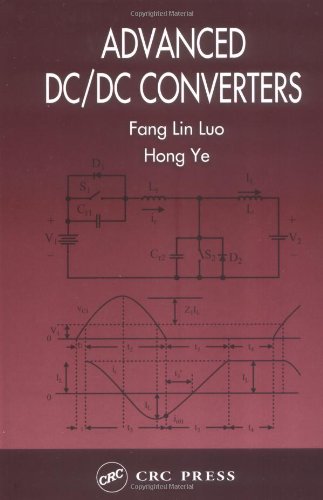
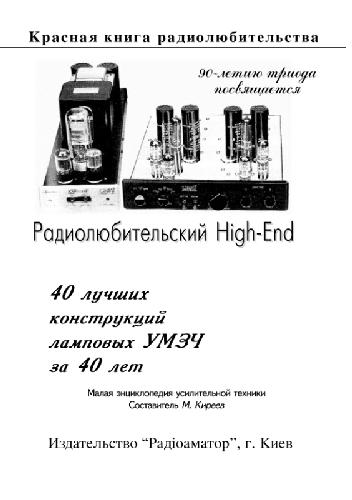

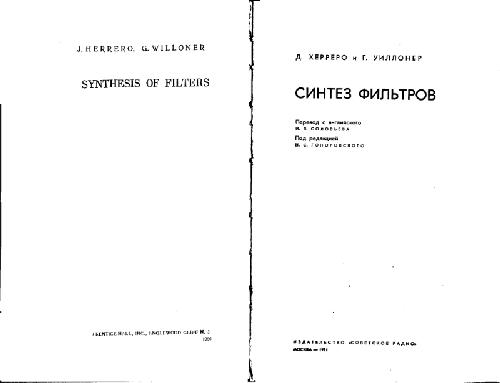
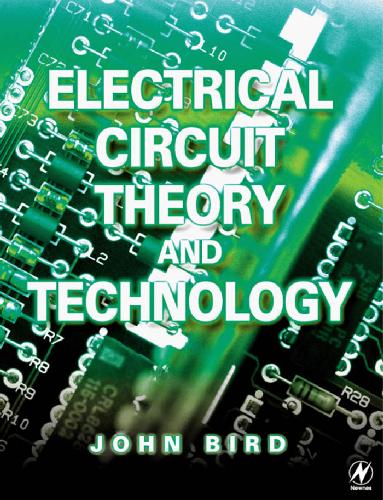
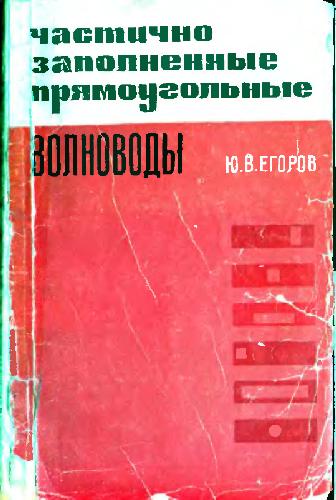
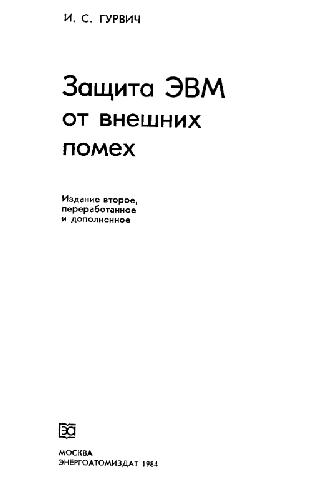
Reviews
There are no reviews yet.